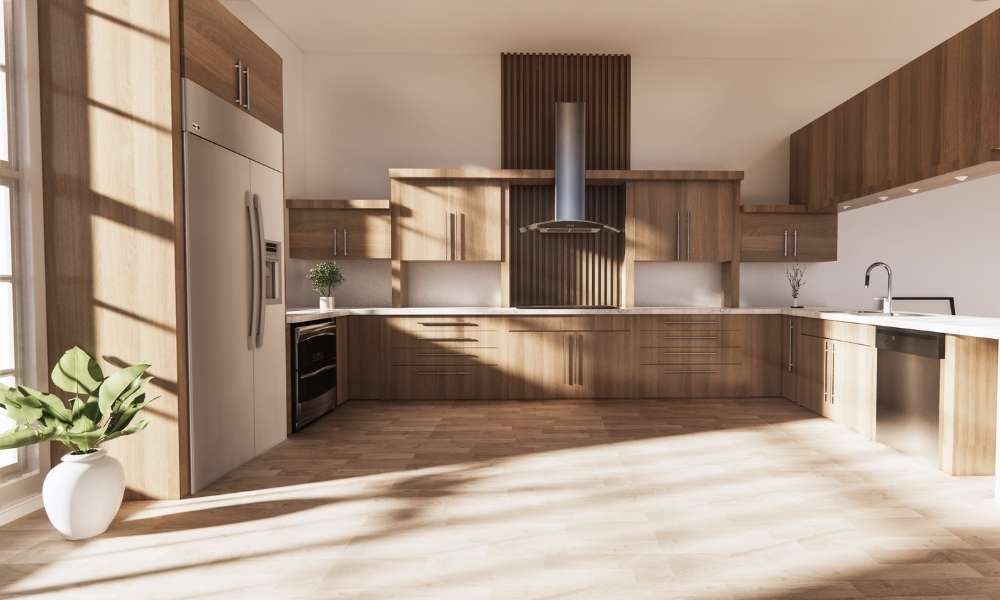Built-in bookshelves are not only functional pieces of furniture, serving the practical purpose of organizing books and display items, but they also add aesthetic value and character to a home. They can be customized to fit any space, making them a popular choice for homeowners looking to enhance their living areas. In this guide, we’ll explore the typical Deep Are Built-In Bookshelves, factors to consider when deciding on the depth, and how the depth impacts usability and design. Whether you’re planning to install new bookshelves or curious about optimizing your existing ones, understanding the depth dimension is crucial for creating both an efficient and visually appealing shelving system
Understanding Depth
The standard depth for built-in bookshelves is generally around 11 to 12 inches. This measurement provides enough space to accommodate most books, from large hardbacks to smaller paperbacks, without causing them to protrude. However, the ideal depth can vary depending on personal needs and the type of items you intend to store. For example, if you plan to showcase large art books or use the shelves for items other than books, such as decorative pieces or photo frames, you might opt for a deeper shelf. It’s important to consider the balance between functionality and aesthetics when deciding on the depth of your bookshelves. Deep shelves offer more versatility for storage, but they also require more space in your room, which might affect the overall design and feel of the space.
Room Size and Layout
The size and layout of the room are crucial in determining the right depth for built-in bookshelves. In small rooms, deep shelves can make the space feel overcrowded. In contrast, shallow shelves in large rooms can look out of place and fail to impact. It’s important to measure the space and consider the room’s scale compared to the shelf depth. A helpful tip is to use painter’s tape to mark the projected depth on the floor or wall for a visual of how the shelves will fit. This aids in choosing shelves that enhance the room’s aesthetics and functionality, ensuring they add to the space rather than detract from it.
Book Sizes and Types
The variety of books and items you plan to store on your shelves should significantly influence the depth decision. Standard novels and textbooks fit comfortably on shelves with an 11 to 12-inch depth, but larger, coffee-table-style books might require more space. Additionally, if your collection includes items like vinyl records, large picture frames, or significant memorabilia, considering a depth of 14 inches or more could be beneficial. This ensures that every item sits securely on the shelf, reducing the risk of damage or accidental falls. It’s also worth considering adjustable shelving, which allows for flexibility in accommodating items of varying sizes, ensuring your built-in bookshelves can evolve with your collection over time.
Functionality and Reachability
One key aspect often overlooked when designing built-in bookshelves is the concept of functionality and reachability. It’s crucial to ensure that the shelves are not only deep enough to hold your items but also positioned at a height that is accessible. Overly high or deep shelves can make it challenging to retrieve items easily, especially for those placed at the back of the shelf. This may lead to underutilization of the space or, worse, avoidance of using the bookshelf altogether. For optimal usability, consider implementing a mix of shelf depths within your built-in unit. Shallow upper shelves can hold smaller items and decor, while deeper lower shelves can accommodate larger books and objects.
Practical Considerations
When embarking on the design or installation of built-in bookshelves, considering practical considerations such as material type and weight capacity is important. The choice of materials—whether wood, metal, or composites—not only influences the durability and appearance of the shelves but also their ability to support the weight of the items you wish to display. Heavier items, like large art books or decorative objects, will require sturdy shelves to prevent sagging over time. Additionally, the overall weight capacity of the shelving unit should be assessed to ensure stability and safety. Consulting with a professional can help determine the best materials and construction methods for your specific needs, ensuring that your built-in bookshelves are both beautiful and functional.
Design and Style
The design and style of built-in bookshelves should reflect not only the functional requirements but also the personal taste and the overall aesthetics of the room. Choices range from traditional wood finishes that offer a classic, timeless look, to modern, minimalist designs that provide a sleek, contemporary feel. The finish and color of the shelves can either complement or contrast with the room’s existing décor, creating a focal point or seamlessly blending into the background. Decorative elements such as molding, trim, and lighting can be added to enhance the visual appeal of the bookshelves and highlight the items displayed. LED strip lighting, for example, can provide both ambient and functional lighting, making it easier to find books while also showcasing them beautifully.
Customization for personal style
The deep of a standard bookshelf typically ranges from 10 to 12 inches, providing ample space for different sizes of books and decorative items. However, the beauty of modern design lies in the customization options available for personal style. Some bookshelves can go as deep as 16 inches, allowing for larger items to be displayed alongside books.
When considering the depth of a bookshelf for your home, it’s important to think about how you want to use it. A deeper shelf can accommodate not only books but also photo frames, plants, and other decorative pieces that reflect your personality and style.
Installation Process
Customization is Key
Customization offers the flexibility to tailor every aspect of the built-in bookshelves to your specific needs and space requirements. Professional installers can assess the distinct characteristics of your room, such as uneven walls or unique architectural features, and adapt the design accordingly. This ensures a perfect fit and maximizes the use of available space. In addition, customization allows for the incorporation of personalized elements that reflect your style and the functionality you desire. Whether this means creating a hidden compartment for valuable items, designing a dedicated shelf for oversized art books, or incorporating a built-in desk or workspace, the possibilities are endless.
Load-Bearing Considerations
Understanding the load-bearing capacity of your walls is crucial when installing built-in bookshelves. This is especially important if you plan to store a large number of heavy books or items. Walls that are not structurally designed to support additional weight may require reinforcement before installation can proceed. A professional installer can conduct a thorough assessment, determining whether your current wall structures are adequate or if additional support systems are needed. This might involve the installation of extra studs or the use of stronger, more durable materials for the shelving itself. Ensuring that your bookshelves are safely anchored not only protects your belongings but also prevents potential damage to your home.
Aesthetic Finishes
The final touch in creating the perfect built-in bookshelves lies in the aesthetic finishes. These finishes not only protect the shelving but also elevate the overall look and feel of the installation. From the choice of paint or stain to the selection of hardware, every detail contributes to the finished product’s beauty and functionality. For a cohesive look, consider finishes that match or complement the existing decor of your room. For example, brass or gold hardware can add a touch of elegance to traditional spaces, while sleek, matte black handles can enhance a modern aesthetic. Additionally, the type of paint or stain chosen can affect the durability and maintenance of your bookshelves. High-traffic areas or homes with pets and children may benefit from finishes that are easy to clean and touch up.
Conclusion
It’s about creating a timeless feature that enhances your living space and reflects your personality. Whether showcasing your vast collection of books, displaying cherished mementos, or simply adding an element of sophistication to your room, built-in bookshelves offer both style and functionality. By carefully considering factors such as material durability, design preferences, and the professional installation process, you can ensure that your built-in bookshelves are not only a beautiful addition to your home but also a practical one. With the right planning and expert assistance, your built-in bookshelves will become a focal point of your home for years to come, blending seamlessly with the architecture and interior design to elevate the entire space.





